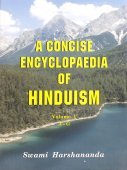Brahmarandhra, Brahman-randhra, Brahma-randhra, Brahmaramdhra: 13 definitions
Introduction:
Brahmarandhra means something in Hinduism, Sanskrit, Marathi. If you want to know the exact meaning, history, etymology or English translation of this term then check out the descriptions on this page. Add your comment or reference to a book if you want to contribute to this summary article.
In Hinduism
Ayurveda (science of life)
Rasashastra (Alchemy and Herbo-Mineral preparations)
Source: Wisdom Library: Rasa-śāstraBrahmarandhra (ब्रह्मरन्ध्र) is the name of an Ayurvedic recipe defined in the fourth volume of the Rasajalanidhi (chapter 2, dealing with jvara: fever). These remedies are classified as Iatrochemistry and form part of the ancient Indian science known as Rasaśāstra (medical alchemy). However, as an ayurveda treatment, it should be taken twith caution and in accordance with rules laid down in the texts.
Accordingly, when using such recipes (e.g., brahmarandhra-rasa): “the minerals (uparasa), poisons (viṣa), and other drugs (except herbs), referred to as ingredients of medicines, are to be duly purified and incinerated, as the case may be, in accordance with the processes laid out in the texts.” (see introduction to Iatro chemical medicines)
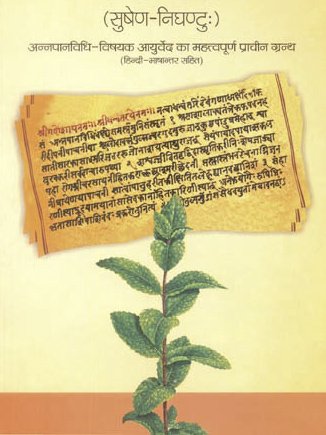
Āyurveda (आयुर्वेद, ayurveda) is a branch of Indian science dealing with medicine, herbalism, taxology, anatomy, surgery, alchemy and related topics. Traditional practice of Āyurveda in ancient India dates back to at least the first millenium BC. Literature is commonly written in Sanskrit using various poetic metres.
Shaktism (Shakta philosophy)
Source: Google Books: ManthanabhairavatantramBrahmarandhra (ब्रह्मरन्ध्र) refers to the “cavity of Brahmā”, according to the Śrīmatottara-tantra, an expansion of the Kubjikāmatatantra: the earliest popular and most authoritative Tantra of the Kubjikā cult.—Accordingly, as Bhairava explains: “I will tell (you) in brief about the Command [i.e., ājñā] that gives bliss. (First the Command) is contemplated in the form of a lightning flash situated in the middle of the Triangle (in the End of the Twelve). Then (the teacher) should cause it to be experienced in the other body (i.e. that of the disciple) entering by the Cavity of Brahmā [i.e., brahmarandhra]. The piercing (of the Wheels in the body) takes place in a moment by the practice of this visualization. [...]”.
Source: academia.edu: The Śāradātilakatantra on YogaBrahmarandhra (ब्रह्मरन्ध्र) is explained in terms of kuṇḍalinīyoga by Lakṣmaṇadeśika in his 11th-century Śaradātilaka.—The body is described, starting from the “bulb” (kanda), the place in which the subtle channels (nāḍī) originate, located between anus and penis (28–9). The three principal channels are iḍā (left), piṅgalā (right) and suṣumṇā (in the centre of the spine and the head). Inside the suṣumṇā is citrā, a channel connecting to the place on the top of the skull called the brahmarandhra (30–4).
Note: The brahmarandhra, the “opening of brahman”, is a small opening on the top of the skull near the fontanel; its name is based on a belief expressed in the older Upaniṣads that it is a place from which the ātman can leave the body to unite with the .
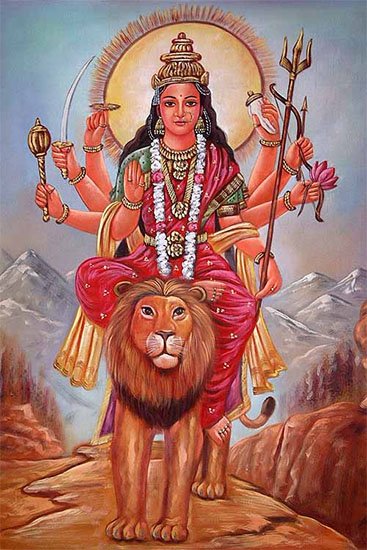
Shakta (शाक्त, śākta) or Shaktism (śāktism) represents a tradition of Hinduism where the Goddess (Devi) is revered and worshipped. Shakta literature includes a range of scriptures, including various Agamas and Tantras, although its roots may be traced back to the Vedas.
Shaivism (Shaiva philosophy)
Source: academia.edu: The Śaiva Yogas and Their Relation to Other Systems of YogaBrahmarandhra (ब्रह्मरन्ध्र, “cranial apperture”) refers to one of the sixteen types of “locus” or “support” (ādhāra) according to the Netratantra. These ādhāras are called so because they “support” or “localise” the self and are commonly identified as places where breath may be retained. They are taught in two different setups: according to the tantraprakriyā and according to the kulaprakriyā. Brahmarandhra belongs to the latter system.
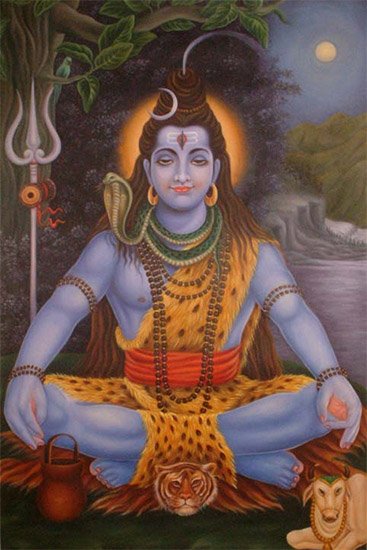
Shaiva (शैव, śaiva) or Shaivism (śaivism) represents a tradition of Hinduism worshiping Shiva as the supreme being. Closely related to Shaktism, Shaiva literature includes a range of scriptures, including Tantras, while the root of this tradition may be traced back to the ancient Vedas.
Yoga (school of philosophy)
Source: Google Books: Croaking Frogs: (Yoga)Brahmarandhra (ब्रह्मरन्ध्र) refers to one of the sixteen vital centres of the body (i.e., ādhāra), according to the Jyotsnā 3.73 (Cf. Gorakṣaśataka 14 and Svātmārāma’s Haṭhapradīpikā 3.72).—In Haṭhayoga, ādhāra refers to a vital point of the body, a seat of vital function. Jyotsnā verse 3.73 cites a passage attributed to Gorakṣa listing the ādhāras as [e.g., brahmarandhra, ...]. The Haṭhapradīpikā refers to sixteen ādhāras but does not name them or explain what they are. The Gorakṣaśataka also refers to sixteen ādhāras as something the Yogī should be familiar with, but does not name them.
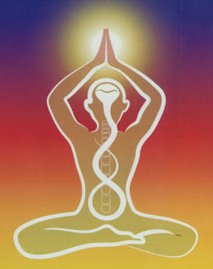
Yoga is originally considered a branch of Hindu philosophy (astika), but both ancient and modern Yoga combine the physical, mental and spiritual. Yoga teaches various physical techniques also known as āsanas (postures), used for various purposes (eg., meditation, contemplation, relaxation).
Vedanta (school of philosophy)
Source: Google Books: Sannyasa UpanishadBrahmarandhra (ब्रह्मरन्ध्र) refers to the “crown of the head”, according to the commentary on the Kuṇḍika-upaniṣad verse 28.—The worshippers of the pure, resplendent Brahman (śabala-brahma) enter the world of Brahma (brahmaloka), that is, the sphere of Hiraṇyagarbha, along the path of the Sun (sūryamārga, or uttarāyaṇa-mārga) by exiting from the crown of the head (brahma-randhra) through the suṣumṇā canal; and there they are engaged in their quest for the attributeless Brahman till the end of the kalpa (till pralaya, or great dissolution, takes place). Having lived there till such time, they ultimately merge with Brahman on the attenuation of their subtle desires and attractions (vāsanā-kṣaya). Thereafter they never return to the plane of relative existence. This is the gradual liberation (krama-mukti) attained by the knowers of Brahman with attributes (saviśeṣa brahmajñānī). On the other hand, the knowers of the attributeless, absolute Brahman (nirviśeṣa brahmajñānī) will attain direct, instant liberation (sadyo-mukti), here and now (ihaiva).
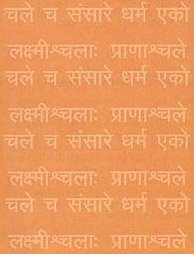
Vedanta (वेदान्त, vedānta) refers to a school of orthodox Hindu philosophy (astika), drawing its subject-matter from the Upanishads. There are a number of sub-schools of Vedanta, however all of them expound on the basic teaching of the ultimate reality (brahman) and liberation (moksha) of the individual soul (atman).
Languages of India and abroad
Marathi-English dictionary
Source: DDSA: The Molesworth Marathi and English Dictionarybrahmarandhra (ब्रह्मरंध्र).—n (S) The aperture, supposed to be at the crown of the head, through which the soul takes its flight on death.
Marathi is an Indo-European language having over 70 million native speakers people in (predominantly) Maharashtra India. Marathi, like many other Indo-Aryan languages, evolved from early forms of Prakrit, which itself is a subset of Sanskrit, one of the most ancient languages of the world.
Sanskrit dictionary
Source: DDSA: The practical Sanskrit-English dictionaryBrahmarandhra (ब्रह्मरन्ध्र).—an aperture in the crown of the head through which the soul is said to escape on its leaving the body; आरोप्य ब्रह्मरन्ध्रेण ब्रह्म नीत्वोत्सृजेत्तनुम् (āropya brahmarandhreṇa brahma nītvotsṛjettanum) Bhāgavata 11.15.24.
Derivable forms: brahmarandhram (ब्रह्मरन्ध्रम्).
Brahmarandhra is a Sanskrit compound consisting of the terms brahman and randhra (रन्ध्र).
Source: Cologne Digital Sanskrit Dictionaries: Shabda-Sagara Sanskrit-English DictionaryBrahmarandhra (ब्रह्मरन्ध्र).—n.
(-ndhraṃ) An aperture in the crown of the head, through which the soul is supposed to escape.
Source: Cologne Digital Sanskrit Dictionaries: Monier-Williams Sanskrit-English DictionaryBrahmarandhra (ब्रह्मरन्ध्र):—[=brahma-randhra] [from brahma > brahman] n. ‘Brahmă’s crevice’, a suture or aperture in the crown of the head (through which the soul is said to escape on death), [Purāṇa; Siṃhāsana-dvātriṃśikā or vikramāditya-caritra, jaina recension] ([Religious Thought and Life in India 291]).
[Sanskrit to German]
Sanskrit, also spelled संस्कृतम् (saṃskṛtam), is an ancient language of India commonly seen as the grandmother of the Indo-European language family (even English!). Closely allied with Prakrit and Pali, Sanskrit is more exhaustive in both grammar and terms and has the most extensive collection of literature in the world, greatly surpassing its sister-languages Greek and Latin.
Kannada-English dictionary
Source: Alar: Kannada-English corpusBrahmaraṃdhra (ಬ್ರಹ್ಮರಂಧ್ರ):—
1) [noun] a suture or aperture in the crown of the head, through which the soul is said to escape on death.
2) [noun] the crown of the head.
Kannada is a Dravidian language (as opposed to the Indo-European language family) mainly spoken in the southwestern region of India.
See also (Relevant definitions)
Partial matches: Brahman, Brahma, Randhra.
Full-text (+48): Murdhajyotis, Mudramarga, Shunyapadavi, Sushumna, Dvadashanta, Piramarantiram, Dashamadvara, Shmashana, Brahmya, Badariyashrama, Mahapatha, Cakra, Dhumragni, Nadi, Krama, Uttarayanamarga, Brahmajnanin, Vasana, Shabala, Pralaya.
Relevant text
Search found 35 books and stories containing Brahmarandhra, Brahma-randhra, Brahman-randhra, Brahmaramdhra, Brahmaraṃdhra; (plurals include: Brahmarandhras, randhras, Brahmaramdhras, Brahmaraṃdhras). You can also click to the full overview containing English textual excerpts. Below are direct links for the most relevant articles:
Paduka-panchaka (the five-fold footstool) (by Arthur Avalon)
Yoga-sutras (with Bhoja’s Rajamartanda) (by Rajendralala Mitra)
Sūtra 3.32 < [Third Chapter (Vibhuti Pada)]
Shat-cakra-nirupana (the six bodily centres) (by Arthur Avalon)
Rasa Jala Nidhi, vol 4: Iatrochemistry (by Bhudeb Mookerjee)
Treatment for fever (137): Brahma-randhra rasa < [Chapter II - Fever (jvara)]
Jnaneshwari (Bhavartha Dipika) (by Ramchandra Keshav Bhagwat)
Verse 5.27-28 < [Chapter 5 - Sannyasa-yoga]
Verse 18.52 < [Chapter 18 - Moksha-sannyasa-yoga]
Verse 8.12 < [Chapter 8 - Akshara-brahman-yoga]
Cidgaganacandrika (study) (by S. Mahalakshmi)
Forms of Praṇava < [Chapter 4 - Fourth Vimarśa]
Verse 183 [Cidānandamayī Śakti enfolds the projection in one’s Self] < [Chapter 4 - Fourth Vimarśa]
Verse 227-228 [Sahasrāra and shower of Somarasa] < [Chapter 4 - Fourth Vimarśa]
Related products
